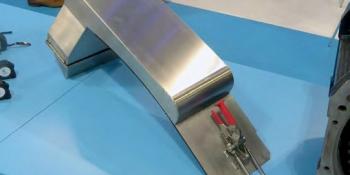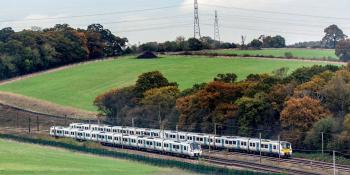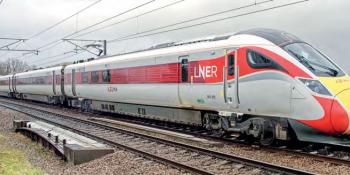Informed Sources
Meanwhile, should we rename ARS?

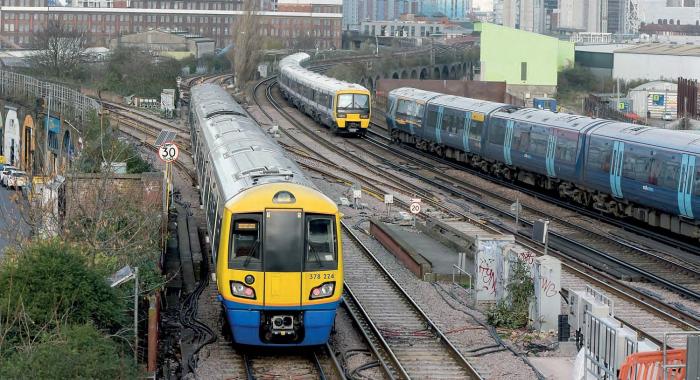
For some reason, some sections of the signalling establishment have been ambivalent about the role of Automatic Route Setting (ARS) in the Digital Railway spectrum. Indeed, there was a quite ferocious spat (by learned institution standards) over the issue within the normally sober Institution of Railway Signal Engineers back in 2013 (‘Informed Sources’, December 2013).
A past President of the IRSE had written: ‘The existing traffic management systems used in Great Britain contain little real “intelligence”. ARS is provided in all modern control centres which provides functionality to set routes in accordance to timetable requirements – but it cannot do much more than that’.
Various engineers involved in the development of ARS at British Rail Research responded vigorously in the correspondence columns, pointing out that ARS was really quite smart. Not for the first time with BR Research, part of the misperception lay with the original choice of terminology. ‘Automatic’ has overtones of an automaton, going through pre-programmed paces. As we shall see later, Siemens has come up with a much better nomenclature.
An unfortunate confirmation that ARS was an early form of Artificial Intelligence, rather than a dumb implementer of the timetable, emerged in the hearings of the inquiry into the Ladbroke Grove collision. Discussing the relative inexperience of the driver involved, it was pointed out that ARS could make life difficult for drivers at Paddington by the sheer ingenuity of its route setting.
For an inexperienced driver, or even a veteran, being signalled over an unexpected route through a busy station throat could be disconcerting. Signallers, too, have in the past complained that ARS does not do what they would have done in the same situation. But it could be argued that if ARS cannot make better decisions than a human operator under pressure, then it is not doing its job.
TM’S SERVANT
Of course we now have Traffic Management (TM), which is really clever and can identify and resolve potential conflicts and enable controllers to plan and re-plan services. So far, with the exception of the only TM system currently working, the Resonate Luminate Integrated system at Swindon and Didcot (‘Informed Sources’, October 2018), proprietary TM systems have been mixed and matched with proprietary control systems.
While these control systems, such as Siemens WestCad, can run a third party ARS, with the current TM systems a limited route setting facility is used to run the timetable downloaded by the TM until it receives an updated version.
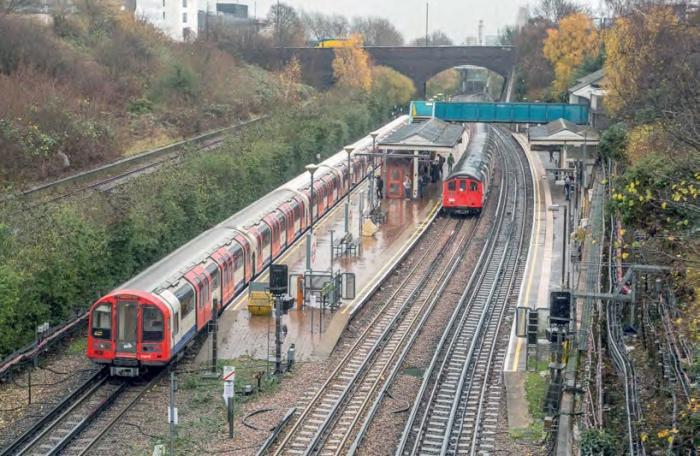
Thus at Three Bridges, the Hitachi Tranista TM will be interfaced with the Siemens WestCad-e work station controlling the Thameslink central core. WestCad-e incorporates a facility called ‘Immediate Route Setting’ (IRS). When there are changes to the service, the Tranista TM sends an updated version of the timetable to the WestCad IRS to run. However, there is a caveat.
Changes Tranista makes to the timetable cannot be implemented in the rolling five-minute ‘window’ ahead of actual time. Just to clarify, if it is 17.00, the TM can’t update the IRS for services between 17.00 and 17.05.
Similarly, with the aborted Integrated TM at Romford Rail Operating Centre (ROC), the Thales ARAMIS-D TM would have been restricted to setting routes at least five minutes before implementation.
I appreciate that my technical writing skills are struggling with this ‘window’ concept a bit. So here’s another explanation. Although the ‘I’ in IRS stands for ‘Immediate’, the overall specification says that TM can’t, to paraphrase Veruca Salt, ‘Change it NOW’. It can upload only changes that come into effect beyond the forward five-minute window.
Now on a busy railway, five minutes is a very long time. For example, a lot can change in five minutes on either side of the Thameslink central core, especially at peak 24 trains per hour (tph) throughput.
FRUSTRATION
With a train having to arrive on time every 2.5 minutes, you can see a situation where Tranista’s Conflict Detection system can see the service going pear-shaped, but is left hopping up and down in frustration because the five-minute window rule prevents it taking prompt corrective actions (Isn’t this taking anthropomorphism to a new level – Ed?).
There have been suggestions that Resonate is somehow ‘cheating’ because Luminate sits on top of the company’s Scalable control system, which incorporates the company’s Enhanced-ARS (EARS). Well, vertical integration clearly has its advantages, but, as I found out during my visit to Swindon, the real benefit is the pairing of Integrated TM with the intelligent EARS.
Where ARAMIS-D and Tranista are frustrated onlookers when they can see trouble looming, Luminate can, as it was put at Swindon, revise the plan and throw it at EARS and leave it to iron out any minor inconsistencies.
There was an excellent article in praise of ARS by my old chums Malcolm Savage and Mike McGuire of consultant Savoir Ltd in the October 2018 IRSE News. This included an illustration of the potential problems caused by the five-minute window, which I will borrow.
For northbound services, the Thameslink challenge will be presenting trains at Blackfriars Junction. These trains can arrive from either London Bridge or Elephant & Castle. Running times between these stations and the junction are four minutes from London Bridge and three minutes from Elephant & Castle.
If a train’s station dwell time at Elephant & Castle is extended significantly there is just three minutes for the decision to be taken to let the following northbound London Bridge service proceed into the central core and maintain the flow of traffic. Tranista will detect this, but the five-minute window means that it cannot give the IRS the necessary revised plan. Instead, the signaller will be expected to note the extended station stop and manually give the next London Bridge train priority. Mind you, rather like the way drivers observe signals with a reliability that exceeds human factors predictions, signallers’ Mk 1 human wetware is pretty efficient. A chum was recently shown round Three Bridges ROC.
After the visit he e-mailed me, incredulous that this busy service was still being run with manual route setting and no ARS.
UNDERGROUND
I had been pondering the conflicting views on the role of ARS within TM for some time when in July 2018 the Institution of Mechanical Engineers, in conjunction with IRSE, ran a conference on traffic management. One of the papers was presented by Ivan Curties, late of Thales and now Principal Project Engineer (Control & Information), Transport for London.
My immediate reaction was whether an urban railway, mostly made up of end-to-end lines with few if any junctions, would contribute much of relevance to my preoccupation with TM on the main line. How wrong I was! Mr Curties’ presentation clarified the TM/ARS relationship.
Mr Curties played to my expectation in his introduction, pointing out that compared with the main line, the Underground is a closed system, trains stop at every station and the only exit and entry point is the depot. Trains don’t split and join up and there is a single operator. But after that self-deprecatory start, he introduced us to the demanding work of LU operation, where preventing overcrowding at small platforms means that ‘maintaining headway is everything’.
‘If we are putting in a 33tph signalling system, we run it at 33tph with no contingency. If the shit hits the fan, it hits it hard and fast’. This means that the operators need tools to handle perturbation quickly.
Within the system, running the service safely is down to Automatic Train Protection (ATP). Automatic Train Operation (ATO) is the key to tight headways. ‘It drives the trains really, really well and brakes perfectly.’
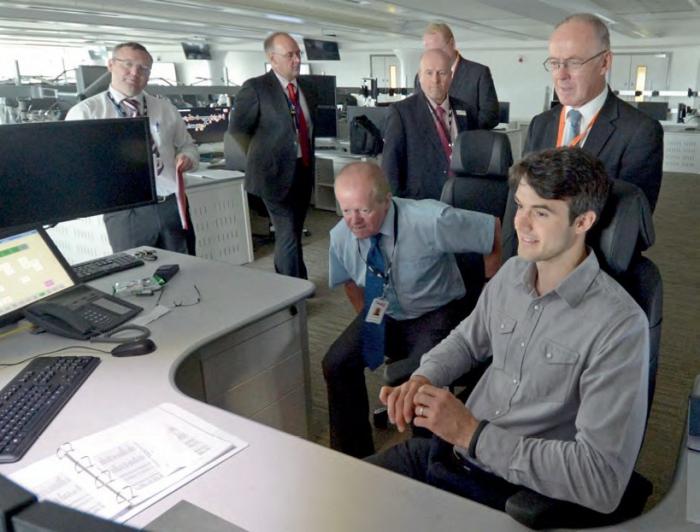
SUPERVISION AND REGULATION
Above that in the control hierarchy there is Automatic Train Supervision (ATS), which runs trains to the timetable. And on top of that Automatic Train Regulation (ATR). ATS is the LU analogue of Network Rail TM. It handles traffic through what junctions there are, with a choice of three modes, and it enables the operators to edit the timetable.
In particular, ATS provides automated editing. On the Central Line, for example, this includes extending trains or diverting them between West Ruislip or Hainault. Another facility is auto-reverse, if the line ahead is blocked. And trains can be cancelled. As Ivan Curties emphasised, these facilities automatically edit the timetable, reducing the workload on the operator.
SUBTLE
Which brings us to ATR, which has the job of smoothing the gaps between trains. It makes multiple minor changes simultaneously in such a way that, in Ivan Curties’ words, ‘it is almost impossible for a human operator to understand what it is doing’.
This echoes experience with ARS at Paddington already mentioned. Initial experience with ATR on the Jubilee Line was not positive, because operators were unhappy seeing trains being held for no apparent reason.
A second attempt on the Central Line ran into the dual problem of testing the algorithms and then getting staff to accept it. However, it was third time lucky on the Victoria Line, where ATR is in successful operation.
ENTER SIEMENS
Ivan Curties’ paper convinced me that that you need smart tactical intelligence to complement the wider role of TM. So when I met Siemens’ Mark Ferrer, Operations Director – Digital Railway, and Mike Lewis, Control Systems Director, in October, I asked them what their company was doing about TM.
Siemens wasn’t involved in Network Rail’s original TMS procurement, which, in retrospect, was no great loss. But now that new Network Rail Chief Executive Andrew Haines is reported to see TM as having equal status to the roll-out of the European Train Control System (ETCS), there is the prospect of serious business to be won.
And Siemens is adding facilities to its WestCad, as opposed to WestCad-e, control system, to provide Integrated Traffic Management. What’s more, the company is going down the TM+ARS route, although, of course, the abbreviations are different.
Instead of TM, Siemens refers to Digital Conflict Resolution (DRC). And when the conflict has been resolved, the revised timetable is sent to the Dynamic Route Setting (DRS) function, which, I have to say, sounds more 21st century than ARS.
On the day of the meeting Siemens had switched on the first DRS. This covered Preston-Blackpool, controlled from Manchester Rail Operating Centre (ROC). Another milestone mentioned during the session was that the Derby resignalling saw the 100th WestCad workstation installed.
LEGACY
In parallel with this development Siemens has also been working on the need to provide the option of ARS where legacy Route Relay Interlockings have been relocked to a WestCad control system. These interlockings don’t incorporate train-operated route release (TORR), nor do they have track circuit ‘anti-bobbing’ protection.
Siemens’ solution has been to incorporate the necessary data for these features into its Westronic Time Division Multiplex (TDM) remote control system linking the WestCad with the interlockings. As a result, the control centre equipment sees these electro-mechanical interlockings as if they were equipped with TORR and anti-bobbing and are thus compatible with ARS.
A further benefit is that it avoids work on the interlockings themselves. This is a good thing, given the condition of the older relay rooms.
VERTICAL KNOWLEDGE
Mark Ferrer noted that these innovations emphasise that to get the automation at the top layer, you need a deep understanding of the development of UK signalling and its various systems down to interlocking level. And that all these developments come from Chippenham, which us older hands still think of as Westinghouse.
Mike Lewis, who has been associated with WestCad from the start, added that all his software team are at Chippenham, together with the data people: production of the hardware platforms and the Westronic communications systems is all UK-based. Recently Siemens even brought equipment cubicle supply back to a UK supplier.
Mr Lewis also provided an interesting perspective on TM which I suspect is reflected in the relative success of the original TMS first deployment contracts and Resonate’s ability to get Integrated TM running at Swindon in a year. ‘Once your route setting engines are running, Traffic Management is just IT (information technology) on top. Signalling is the hard part, but somehow industry believes that Traffic Management is difficult and expensive.’
Both Siemens and Resonate are hard-core UK signalling specialists, with in-depth knowledge of systems and equipment. Both WestCad and Resonate’s Scalable came into being at the birth of the electronic control centre in the late 1980s and have grown up with its development. Commissioning 100 WestCad workstations gives you corporate memory.
So with TM a Network Rail priority in Control Period 6, Network Rail has two established UK suppliers ready to deliver. But has it learned the lesson of the first deployment schemes that TM is not a ‘bolt-on’? Procurement of the East Coast main line resignalling project suggests not.
Currently procurement is based on three framework contracts covering train control: effectively European Train Control System, Traffic Management and a ‘Railway Systems Integration Partner (RSIP)’, who will work within the Network Rail Route ‘to lead industry in the development and deployment of ETCS between King’s Cross and just south of Grantham’.
According to Network Rail, the RSIP’s responsibilities will include managing integration activities and establishing a collaborative relationship with the Route and its technology partners. It seems to me that we are in danger of repeating the mistake of treating TM as a bolt-on, rather than an integral part of what in Euro-speak is called ‘Command and Control’ or, in plain English, ‘signalling’.
